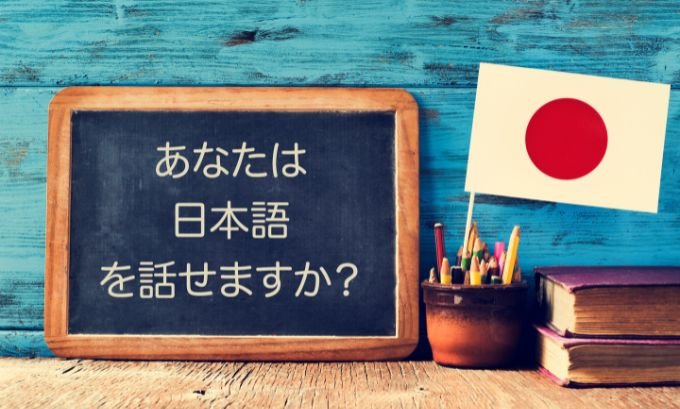So, you’ve decided to learn Japanese.That’s an exciting goal! The best way to learn Japanese for beginners is to build a strong foundation. Start by mastering the writing systems, then use effective tools and a structured plan to learn vocabulary, kanji, and grammar. This guide provides the actionable tips and strategies you need to go from zero knowledge to confident beginner.
Table of Contents
Your First Step: Master the Japanese Writing Systems
To learn Japanese, you must first learn how to read. Japanese uses three main writing systems: Hiragana, Kataka, and Kanji. Tackling them in that order is the most effective approach for any beginner.
Start with Hiragana: The Foundation
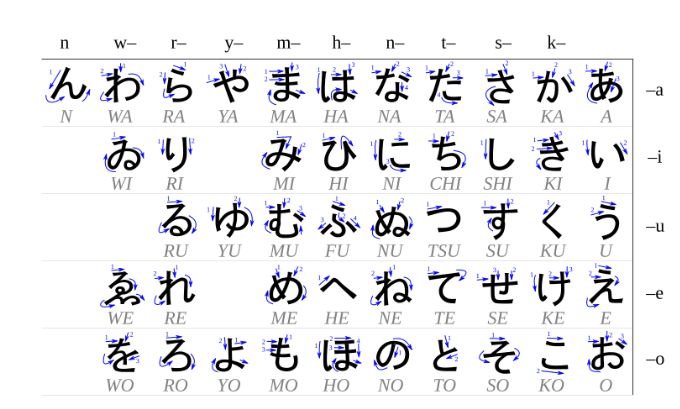
What is it? Hiragana is the phonetic alphabet that forms the backbone of the Japanese language. It consists of 46 characters, each representing a specific syllable (e.g., ‘ka’, ‘shi’, ‘to’).
Think of Hiragana as the Japanese equivalent of the English alphabet. It’s used for native Japanese words, verb endings, particles, and grammatical elements that don’t have a Kanji representation. Because it’s so fundamental, nearly all beginner learning materials, from textbooks to apps, require you to know it. Mastering Hiragana first will make every subsequent step in your journey much easier.
My Experience Learning Hiragana
When I first started, I tried the traditional method of writing each character dozens of times. It was slow and frustrating. I would forget characters just hours after practicing them. The breakthrough came when I discovered mnemonic techniques. For example, to remember ‘ぬ’ (nu), I imagined a noodle with a loop at the end. This visual trick helped the characters stick in my memory almost instantly. Instead of weeks, I was able to read all 46 characters in just a few days.
What I Like / Strengths:
- Logical System: Each character corresponds to a consistent sound, making pronunciation straightforward.
- Gateway to Grammar: Understanding Hiragana unlocks your ability to learn particles and verb conjugations, the core of Japanese sentences.
- Builds Confidence: Quickly learning the first writing system provides a huge motivation boost.
Areas for Improvement:
- Similar Characters: Some characters look very similar (e.g., さ vs. き, ね vs. れ), which can be confusing at first. Using mnemonic apps or flashcards helps differentiate them.
Next, Learn Katakana: For Foreign Words
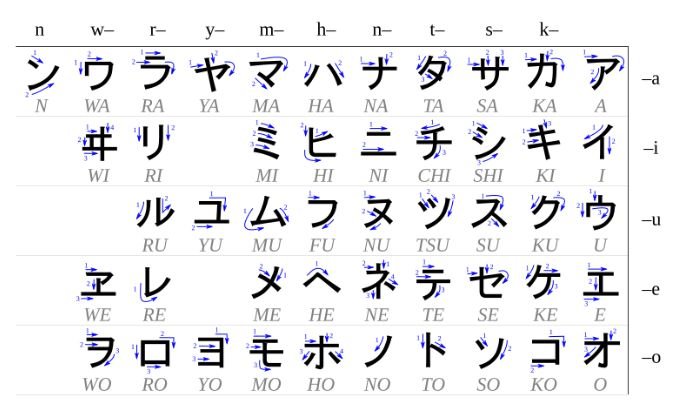
What is it? Katakana is the second phonetic alphabet, also with 46 characters that correspond to the same sounds as Hiragana. Its primary use is for writing foreign loanwords, onomatopoeia, and for adding emphasis, similar to using italics in English.
You’ll see Katakana everywhere in Japan—on menus for items like ‘コーヒー’ (kōhī, coffee), in tech for words like ‘パソコン’ (pasokon, personal computer), and for foreign names. While it’s used less frequently than Hiragana in basic sentences, ignoring it is not an option.
My Experience with Katakana
After learning Hiragana, I thought Katakana would be a breeze. I was wrong. Because it appeared less often in my beginner textbook, I found it harder to retain. The characters are more angular and, to me, less distinct. What helped was actively seeking it out. I started reading the labels on Japanese snacks and trying to decipher brand names. This real-world practice made it more relevant and easier to remember. Characters like ‘シ’ (shi) and ‘ツ’ (tsu) were particularly tricky, but constant exposure was the key.
What I Like / Strengths:
- Expands Your Vocabulary: Lets you recognize English and other foreign words written in Japanese.
- Reinforces Pronunciation: Practicing Katakana solidifies your understanding of Japanese sounds.
Areas for Improvement:
- Less Immediate Practice: Beginner materials often focus more on Hiragana and Kanji, making Katakana retention a challenge. You have to be proactive in finding practice materials.
Tackling the Elephant in the Room: Kanji
What is it? Kanji are logographic characters borrowed from Chinese. Each character represents an idea or concept, like ‘人’ (person) or ‘水’ (water). There are thousands of them, but you only need around 2,000 for daily literacy.
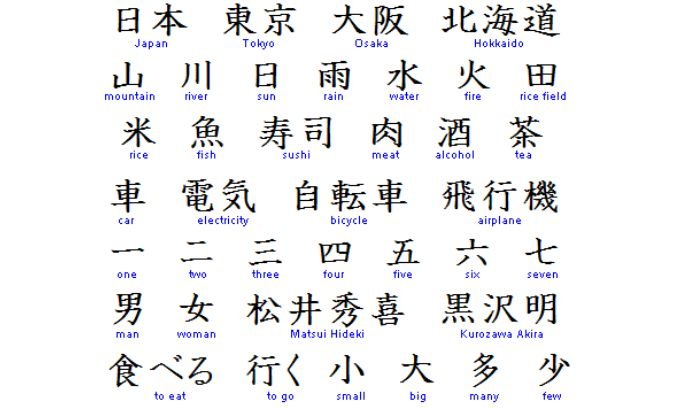
Many learners see Kanji as the biggest hurdle, and they’re not wrong—it’s a massive undertaking. However, avoiding it is the single biggest mistake you can make. Kanji is integral to written Japanese. It makes sentences more compact and easier to read by distinguishing between homophones (words that sound the same but have different meanings).
The Smart Way to Learn Kanji: The Radicals Mnemonic Method
Instead of trying to memorize thousands of complex characters by brute force, the Radicals Mnemonic Method offers a smarter path. This technique involves breaking down a complex Kanji into its smaller components, called radicals.
For example, the Kanji for “rest” is ‘休’. It’s composed of two radicals:
- ‘人’ (person)
- ‘木’ (tree)
By creating a simple story—”A person leaning against a tree to rest”—you create a powerful mnemonic that makes the character unforgettable. This method transforms Kanji from a random collection of strokes into a logical, interconnected system.
Tools and Systems for Efficient Learning
Once you have a grasp of the writing systems, you need a system to learn and retain vocabulary and Kanji efficiently. This is where modern tools and proven methodologies come in.
Using a Spaced Repetition System (SRS)
What is it? A Spaced Repetition System (SRS) is a learning algorithm that helps you memorize information by quizzing you at increasing intervals. It shows you a new piece of information (like a vocabulary word) and then asks you to recall it just before you’re about to forget it.
This method is scientifically proven to be far more effective than cramming. For language learning, an SRS is a game-changer. It automates your study schedule, ensuring you review the right words at the right time to move them from your short-term to your long-term memory.
Anki: Your Customizable SRS Flashcard App
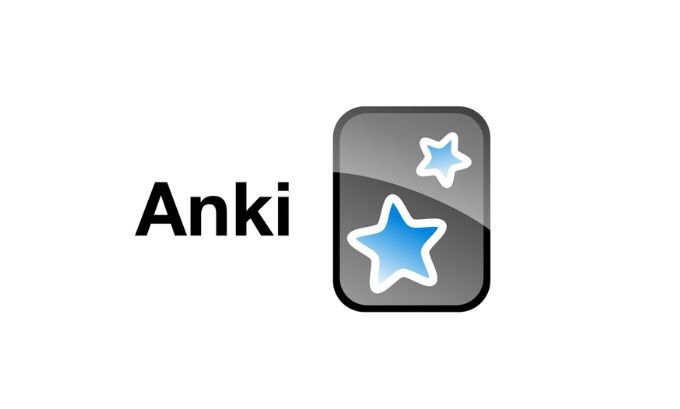
Anki is a free, powerful, and highly customizable flashcard app that uses the SRS algorithm. You can create your own decks or download pre-made ones. For a beginner aiming for the JLPT N5 (the first level of the Japanese Language Proficiency Test), you can find decks containing all the necessary vocabulary and Kanji.
How I Use Anki
When I encounter a new word, I create a new card in Anki. My card format includes:
- Front: The word in Japanese (e.g., 食べる).
- Back: The reading in Hiragana (たべる), the English meaning (to eat), and an example sentence (りんごを食べる – I eat an apple).
Processing my reviews takes about 15-20 minutes a day. It’s a small, consistent habit that has allowed me to build a vocabulary of thousands of words over time.
Want to immerse yourself even deeper in Japanese culture? Visit Tokyo Mart for authentic snacks, drinks, and study-friendly treats!
WaniKani: The Structured Kanji Learning Program
If creating your own Anki decks sounds like too much work, WaniKani is an excellent alternative. It’s a web-based SRS program specifically designed to teach Kanji and vocabulary using the Radicals Mnemonic Method.
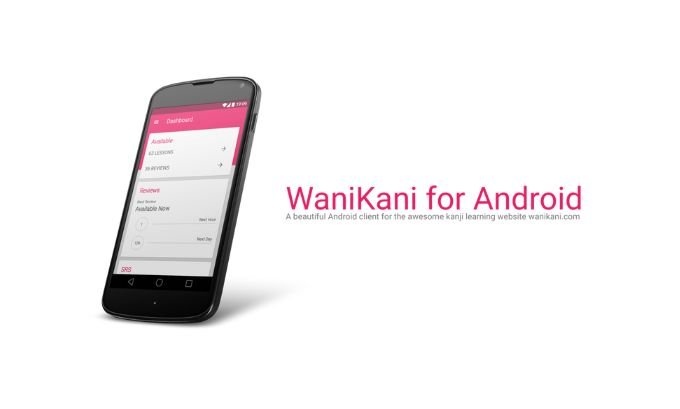
WaniKani teaches you radicals first, then uses those radicals to teach you Kanji, and finally teaches you vocabulary words that use those Kanji. This structured, layered approach builds on itself, making the learning process feel logical and manageable. It provides its own funny and memorable mnemonics for every radical, Kanji, and vocabulary word.
WaniKani vs. Anki
| Feature | WaniKani | Anki |
|---|---|---|
| Primary Focus | Kanji and vocabulary using radicals | Anything you want to memorize |
| Structure | Highly structured, guided path | Fully customizable, self-directed |
| Content | Pre-made lessons and mnemonics | User-created or downloaded decks |
| Cost | Subscription-based (free levels) | Free (except for the iOS app) |
| Best For | Learners who want a guided, “don’t-make-me-think” system for Kanji. | Learners who want full control over their study content and method. |
Building Sentences: Your Guide to Grammar
Knowing words is one thing, but stringing them together into meaningful sentences requires grammar.
Tae Kim’s Guide to Japanese Grammar
One of the most highly recommended resources for self-learners is Tae Kim’s Guide to Japanese Grammar. Available for free online, this guide explains Japanese grammar from a practical, logical perspective, rather than relying on the rigid, often confusing academic approach found in many textbooks.
Tae Kim breaks down concepts like particles (は, が, を), verb conjugations, and sentence structure in a way that just makes sense. He starts with the absolute basics and builds up complexity in a logical order, providing plenty of example sentences along the way.
My Experience with Tae Kim’s Guide
When I was stuck on the difference between the particles は (wa) and が (ga), my textbook’s explanation left me more confused. I turned to Tae Kim’s guide. His explanation, which framed ‘wa’ as the topic marker and ‘ga’ as the identifier, finally clicked. Reading through his guide felt less like studying and more like having a knowledgeable friend explain things clearly.
Putting It All Together: A Beginner’s Study Plan
Here’s a sample roadmap incorporating these tips on how to learn Japanese for beginners:
- Week 1-2: Master the Kana.
- Dedicate this time to learning Hiragana and Katakana.
- Use mnemonic charts and apps like Kana (iOS) or Kanji Study (Android) to test yourself.
- Listen to pronunciation guides from resources like JapanesePod101 to ensure you’re saying the sounds correctly.
- Month 1-3: Build Your Kanji and Vocabulary Foundation.
- Start using WaniKani or a JLPT N5 vocabulary deck in Anki.
- Commit to learning 5-10 new words and 2-3 new Kanji per day.
- Focus on consistency. A little bit every day is better than a lot once a week.
- Month 2 and Beyond: Start Learning Grammar.
- Once you know around 100-200 words, begin working through Tae Kim’s Guide to Japanese Grammar.
- As you learn a new grammar point, try to create your own sentences using the vocabulary you know. This active use will solidify your understanding.
- Ongoing: Practice, Practice, Practice.
- Practice reading simple texts. Many apps and websites offer graded readers for beginners.
- Practice listening. JapanesePod101 has beginner-level podcasts that break down conversations.
- Practice typing. Install a Japanese keyboard on your computer and phone to get used to typing the words you learn.
FAQ: Your Questions Answered
Q1: How long does it take to learn Japanese for a beginner?
To reach a basic conversational level and pass the JLPT N5, you can expect it to take 3-6 months with consistent study (30-60 minutes per day). Fluency is a much longer journey, often taking several years.
Q2: Can I learn Japanese just by watching anime?
While anime can be a fun supplement for listening practice, it’s not a structured learning method. Anime language is often informal, stylized, or specific to certain genres. You need a foundational study plan covering grammar and vocabulary to make real progress.
Q3: Do I really need to learn Kanji?
Yes, absolutely. While it’s possible to get by with just Hiragana and Katakana for very basic phrases, you cannot become literate in Japanese without learning Kanji. It is essential for reading everything from books and websites to signs and menus.
Q4: Should I learn to write Kanji by hand?
For a beginner, learning to read Kanji is far more important than learning to write it by hand. Most daily communication is typed. While writing can help with memorization, prioritize recognition and reading first to speed up your progress.
Q5: What’s the best textbook for beginners?
Popular choices include Genki and Minna no Nihongo. However, many self-learners find success by combining a grammar guide like Tae Kim’s with an SRS app, which can be more flexible and cost-effective.
Q6: Is Japanese a hard language to learn?
The U.S. Foreign Service Institute classifies Japanese as a Category V language, meaning it is one of the most difficult for native English speakers to learn. The grammar is very different from English, and mastering the three writing systems takes significant effort. However, with the right strategy and consistent effort, it is absolutely achievable.
Q7: What is the JLPT N5 and should I take it?
The JLPT N5 is the easiest level of the Japanese Language Proficiency Test. It certifies a basic understanding of Japanese. Studying for it provides a clear goal and a structured list of vocabulary, Kanji, and grammar points to master. It’s a great first milestone for any beginner.
Conclusion: Your Journey Starts Now
Learning Japanese is a marathon, not a sprint. The tips and strategies in this guide are designed to give you a powerful start by focusing on a solid foundation and efficient methods. Don’t get overwhelmed by the sheer volume of what you need to learn. Instead, focus on the next small, actionable step.
Master Hiragana. Then Katakana. Start learning your first 100 Kanji with WaniKani or Anki. Read the first chapter of Tae Kim’s Guide. By breaking down this monumental task into manageable chunks, you’ll stay motivated and make steady progress. Your journey to Japanese fluency begins with that single, first step.
Ready to start? Pick one tool or resource from this guide and spend just 15 minutes with it today.

